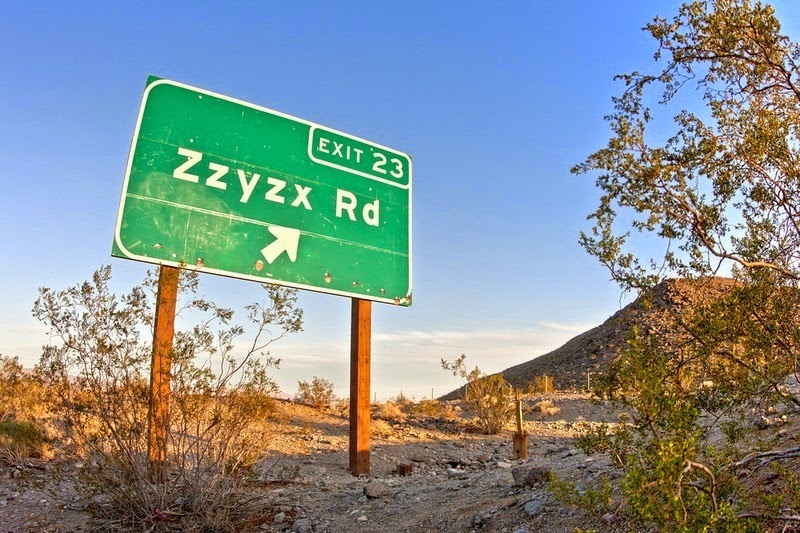About half way between Los Angeles and Las Vegas, as you drive along Interstate 15 through the lonely Mojave Desert, you’ll come across an unusual exit sign directing you towards a rather oddly-spelled “Zzyzx Road” (pronounced “Zye-Zex” and rhymes with “Isaacs”). The 4.5 mile-long, part paved and part dirt road leads you to an old health resort, now abandoned, called Zzyzx Springs, started by a self-proclaimed minister and quack named Curtis Howe Springer in the 1940s. Today, it’s home to the Desert Studies Center, and the artificial Lake Tuendae that the pseudo-doctor built is now a refuge habitat of the endangered Mohave tui chub, a kind of fish.
Before Zzyzx became Zzyzx, it was called the Soda Springs, because of the presence of a natural spring, and was a popular stop for Indians in search of fresh water. The area had prehistoric quarry which later became a mining site. In 1944, Curtis Howe Springer, who had made a name for himself as a Los Angeles radio personality, purchased a mining claim on 12,800 acres of land surrounding the springs with the intention of building a Mineral Springs and Health Spa. He called the area Zzyzx, a name he had invented himself claiming it to be “the last word in the English language.”

Lake Tuendae. Photo credit
Today the place is managed by the California State University as their Desert Studies Center where all manner of arid-climate and archaeological research is conducted. Most of the concrete buildings still stand, repurposed as a research facility. The artificial Lake Tuendae is now one of the few remaining habitats of the endangered species Mohave tui chub.
As to the name itself – Zzyzx inspired at least two B-grade horror movies. The one released in 2006, called Zyzzyx Road, holds the dubious distinction of recording the lowest box office gross in the history of America cinema – a whopping US $30 during its one-week theatrical release.

Sources: Wikipedia / Roadside America / WeirdUS / CN Traveller




















